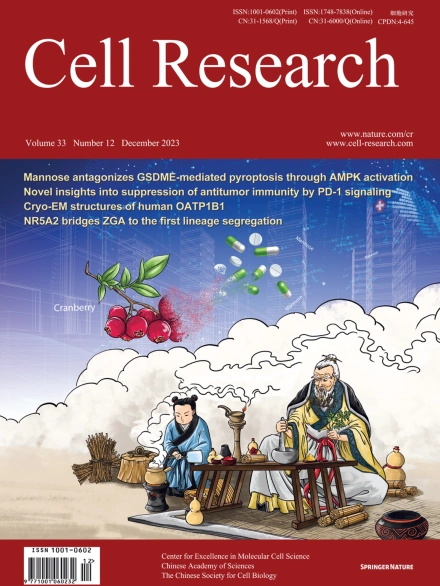
Advanced Search
Submit Manuscript
Advanced Search
Submit Manuscript
Volume 33, No 12, Dec 2023
ISSN: 1001-0602
EISSN: 1748-7838 2018
impact factor 17.848*
(Clarivate Analytics, 2019)
Volume 33 Issue 12, December 2023: 940-951 |
Cryo-EM structures of human organic anion transporting polypeptide OATP1B1
Ziyang Shan1,† , Xuemei Yang1,† , Huihui Liu2,† , Yafei Yuan3,† , Yuan Xiao3,† , Jing Nan1,† , Wei Zhang1 , Wenqi Song3 , Jufang Wang1 , Feiwen Wei1 , Yanqing Zhang1,*
1Shanghai Fifth People’s Hospital, Fudan University, and Shanghai Key Laboratory of Medical Epigenetics, International Co-laboratory of Medical Epigenetics and Metabolism (Ministry of Science and Technology), Institutes of Biomedical Sciences, Fudan University, Shanghai, ChinaMembers of the solute carrier organic anion transporting polypeptide (OATPs) family function as transporters for a large variety of amphipathic organic anions including endogenous metabolites and clinical drugs, such as bile salts, steroids, thyroid hormones, statins, antibiotics, antivirals, and anticancer drugs. OATP1B1 plays a vital role in transporting such substances into the liver for hepatic clearance. FDA and EMA recommend conducting in vitro testing of drug–drug interactions (DDIs) involving OATP1B1. However, the structure and working mechanism of OATPs still remains elusive. In this study, we determined cryo-EM structures of human OATP1B1 bound with representative endogenous metabolites (bilirubin and estrone-3-sulfate), a clinical drug (simeprevir), and a fluorescent indicator (2′,7′-dichlorofluorescein), in both outward- and inward-open states. These structures reveal major and minor substrate binding pockets and conformational changes during transport. In combination with mutagenesis studies and molecular dynamics simulations, our work comprehensively elucidates the transport mechanism of OATP1B1 and provides the structural basis for DDI predictions involving OATP1B1, which will greatly promote our understanding of OATPs.
https://doi.org/10.1038/s41422-023-00870-8